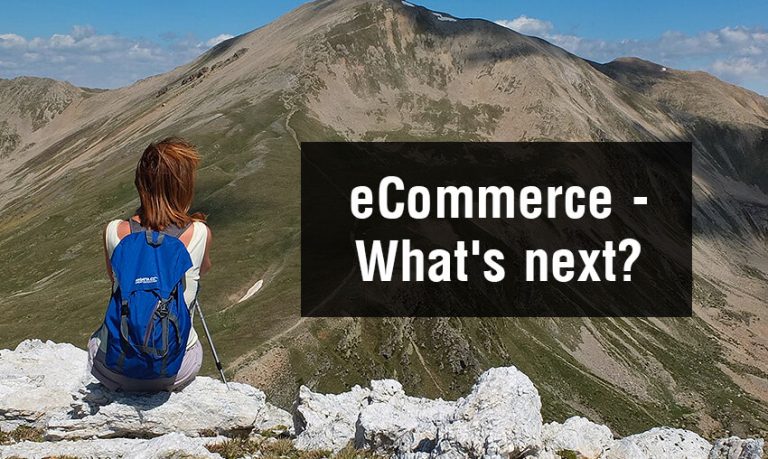Ecommerce today is a norm and no more an emerging field. It has already materialized into one of the popular sectors worldwide, changing the way we shop. Look at the statistics. According to Statista, by 2021, there would be over 2.14 billion online purchasers of goods and services.
It also finds that in 2019, sales from ecommerce reached 3.53 trillion US dollars while estimates are that by 2022, the revenue could reach 6.54 trillion US dollars.
There are several challenges that Ecommerce companies face today. These include finding the right suppliers and employees, designing the right product, generating traffic on the portal, and managing the leads, store, inventory, and logistics, amongst many others.
One of the most important challenges facing businesses today is choosing the right technology and technology partners, and also keeping up with the emerging technology and ecommerce trends.
To say technology plays a major role in the growth of ecommerce is an understatement because technology drives ecommerce in more ways than one! Ecommerce is also evolving and upgrading as per technology trends and inputs. Hence it becomes inevitable for ecommerce businesses to constantly adapt themselves to new trends in the field and stay informed and prepared.
Here are a few ecommerce trends of 2025 that you could incorporate and gain from to make your business stand out for your customers.

See How Our Experts Can Drive More Traffic to Your Website!
SEO: Boost your rankings and drive more organic traffic today!
Website Design/Development: Create a stunning website that converts visitors into customers.
Paid Media: Reach the right audience at the right time with expertly managed paid media.
2025 Ecommerce Trends: What’s Next for Your Business?
Mobile Shopping Continues to be a Major Game-changer
Studies have shown that a majority of internet users access the web using their smartphones, be it for checking social media accounts, watching movies or videos, or shopping. As per a study, by 2021, at least 72.9% of ecommerce revenue will be generated through mobile commerce.
The increased usage of mobiles has helped ecommerce growth as it has made shopping easier, faster, and more convenient. Then, a majority of online shoppers are in the age group of 20-40 who are more tech-savvy and are also impulsive shoppers who are more concerned about fashion, brand, and style than pricing. So, when they like a product, they waste no time in purchasing it.
Thus, creating mobile-optimized sites is not an option but a necessity. In addition to mobile apps, Progressive Web Apps are helping ecommerce companies improve customer experience through enhanced interaction and seamless experience. Mobile SEO services in the USA can help develop mobile-friendly sites and apps apt for your ecommerce business.
Convenient Payment Options
More convenient payment options are a big draw for customers now. Though credit and debit card payments are still popular, other forms of digital payment are also making their way into online payments. Payment channels now such as Google Pay, Apple Pay, Paypal, etc. make frictionless checkout a possibility. QR code payment is also trending.
It is also not the availability of different options, but also the ease of payment. Many sites now save the details of their customers so they don’t have to keep typing. This mode of invisible payment saves time and makes the shopping process smoother.
While preferring the one-click payment option, customers also want assurance of security. Hence, companies have to focus on winning the trust of their customers by enhancing security compliances.
Another trend in the ecommerce payment sector is the possibility of subscription plans for customers. Experts are of the opinion that in the coming years, more e-retailers will offer subscription services that stand to benefit customers as well as companies. While buyers get customized plan that suits their budget, companies now have an opportunity to acquire long-term customers.
The bottom line is that by offering multiple and varied payment options to buyers, ecommerce companies can increase conversion rates and prevent cart abandonment. You can look at WooCommerce development companies to help create customer-friendly payment options on your site.
Augmented Reality is making Online Shopping as Real as it could be
Even though online shopping offers many advantages, there is one glaring disadvantage which is, that customers are not able to try or feel the product before buying.
Well, not anymore, as augmented reality is already here! It helps in visualizing the product and allowing shoppers to try on the product virtually. For example, many eyewear, makeup, and wristwatch brands enable the ‘virtual’ trying of their products, making customers more confident about their purchases.
Even furniture stores are using augmented reality to their advantage. Visitors to stores such as Houzz can now virtually see how a sofa or a chair on the site will look in their living room. Augmented reality is a win-win situation for companies as well as buyers.
Ecommerce businesses will have no option but to use the technology to offer a better instinctive and immersive shopping experience to their customers. A Magento ecommerce development company can help you create sites that make the best use of augmented reality technology.
AI is Revolutionizing Ecommerce in More Ways than One
Artificial Intelligence is creating magic in every sector it is a part of and ecommerce is no different. For one, it is helping ecommerce businesses to make smart recommendations to their customers and offers personalized guidance as per their needs.
Another key contribution of AI in e-commerce is making the availability of business 24/7 a reality through real-time information collection. For example, chatbots, armed with answers to possible queries of customers, are able to offer assistance any time of the day or night.
AI thus offers multiple advantages not just to customers but also to the business, thus helping elevate the ecommerce sector to a higher level.
When you instill new technology, you will have to create dynamic pages that load faster. Such sites can be created with the help of an angular js development company.
Personalization for Better Customer Engagement
Technology is enabling ecommerce to offer personalized services and increase the number of loyal customers. Mobile personal assistants are just one example.
Businesses are also looking at going to the customers via focusing on the social media sites they hang out with and through emails and other channels.
Personalization also helps companies make better product recommendations and send out personalized messages to customers. Through devising ways to engage with customers, ecommerce companies can now not only offer a more comfortable shopping experience but also get better conversion rates.
Sustainability Practices Add to the Trust Factor of Business
World over, there is growing awareness about eco-friendly practices in daily life. Sustainable brands are getting popular and customers are enquiring about the environmental-friendly measures sellers are utilizing.
Ecommerce businesses can look at different ways to ensure sustainability including minimalist and eco-friendly packaging measures, reducing waste, engaging with sustainable brands, and more.
Voice Search is Not the Future of Ecommerce but the Present
Typing keywords could be a passé in the near future as voice search is touted to gain prominence in internet usage. Today, many are already making use of voice assistants such as Google Assistant, Apple’s Siri, and Amazon’s Alexa to play music, to know the news, and even for online shopping.
A 2019 study conducted by Microsoft on voice technology finds that around 72% of people they studied used voice search via a personal digital assistant.
It means businesses will have to alter keywords to suit voice searches and use appropriate SEO strategies for voice search optimization.
Visual Commerce to Enrich Customer Experience
It is no longer about ‘a picture is worth a thousand words,’ in e-commerce but that, engaging visual content is worth a hundred pictures. Visual commerce can be referred to as the next stage of pictures and photographs. It helps capture the attention and interest of visitors through interactive content, product videos, consumer-generated videos, and more.
Visual commerce is here to stay and it is already redefining ecommerce marketing. With the rise in Instagram influencers and YouTube channels, videos are the go-to option for most when they want information on varied topics, be it recipes, tutorials, and more. So, what customers want is not just static images but more information on the products.
For example, if a visitor visits a site to buy a blender, would they like to make a decision on just the photograph alone? Either they would want a video on the working of the blender or they will visit a YouTube channel for a demo. So, why not offer them on your site and help them make the decision to purchase rather than causing a loss of interest over time?
Today’s Ecommerce Trends are Tomorrow’s Norm
Ecommerce is constantly evolving. It will not take much time for the trend of today to be the essential strategies for tomorrow. Also, many more trends are waiting in the wings to change the face and structure of ecommerce. The key is to adapt and adapt, learn and relearn to keep your business a step ahead of your rivals and a step closer to your customers.






